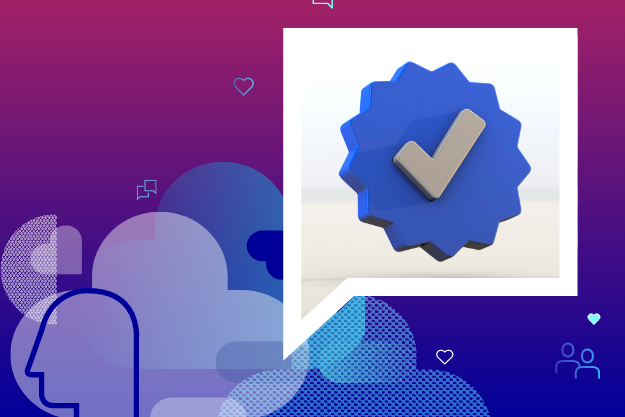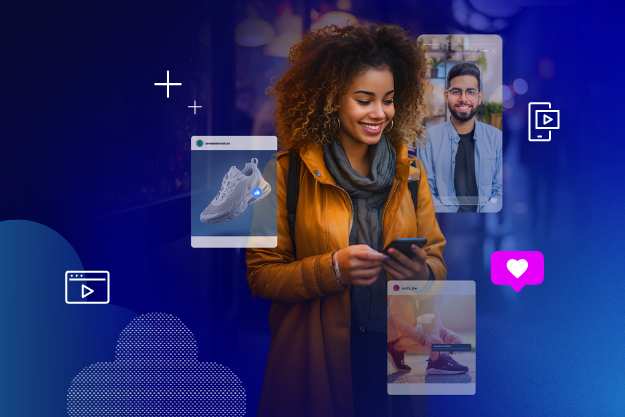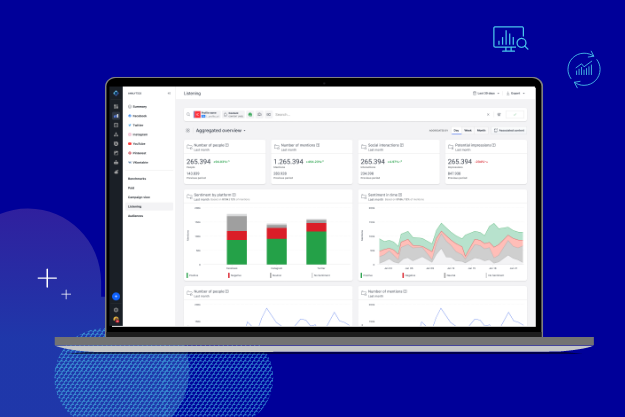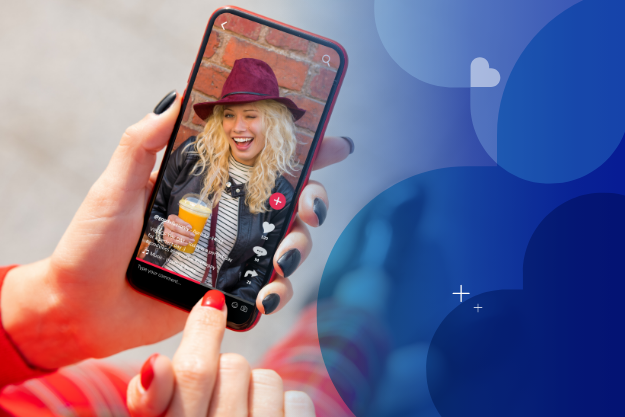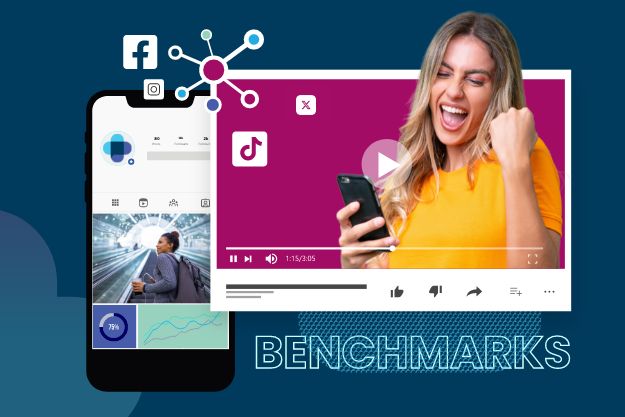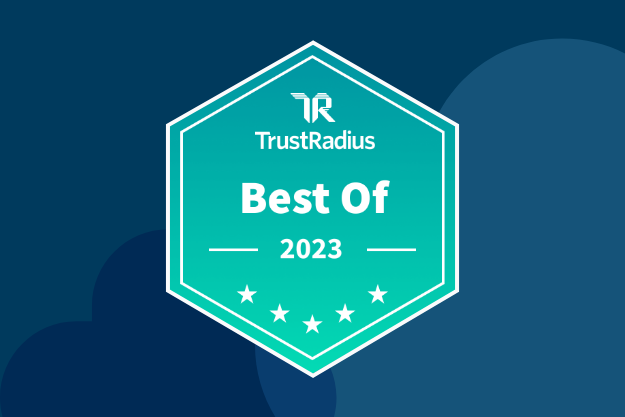Since Elon Musk acquired Twitter in late 2022, the verification standards for brand or personal accounts have changed dramatically, and the Twitter community has had mixed feelings about the shift. Today, any user paying for Twitter Blue, Twitter’s $8/month subscription model, automatically receives a verification badge — also referred to as a “blue tick” or “checkmark.” However, there are other ways to get an account verified, and the ever-changing nature of this process is sparking major discourse on the app.
The history of Twitter verification
Historically, verification on social media has been beneficial to brands and influencers (as well as other organizations and public figures) looking to protect their legitimacy and prevent identity fraud on social media. Twitter actually introduced the concept of account verification in 2009 to avoid this from happening, followed shortly by Instagram, Facebook, Pinterest, and YouTube.
Prior to Musk’s acquisition of Twitter, the only way to get verified and receive a blue checkmark on your profile was through a detailed verification request process. Companies and users were required to fit into one of several categories to be eligible, and most were expected to produce supporting documentation like official websites or news articles proving their authenticity. While some legitimate organizations and individuals faced roadblocks due to these requirements, the guidelines were generous enough for roughly 400,000 users to become verified by 2022.
Twitter Blue was introduced in 2021 and was originally pitched as a subscription option for users to get early access to exclusive features like editing Tweets and receiving dedicated customer support. Once Musk took over in 2022, verification was added to the package. For several months, Twitter leaned into a “Legacy Verification policy” that allowed accounts that had been verified through the old process to keep their badge.
In April 2023, Twitter stripped these accounts of their blue tick marks, requiring them to subscribe to Twitter Blue or to “Verified Organizations,” an additional subscription model for companies to have full control over their verification status.
Below are a few notable features available for subscribers (see the full list and how to get started here).
Twitter Blue: $8/month
Blue checkmark
Edit or undo buttons
Fewer timeline ads
Prioritized rankings in timelines and search
Text formatting
Longer tweet length (up to 10,000 characters)
Bookmark folders
Longer video uploads
Verified Organizations: $1,000/month
Gold checkmark
All Twitter Blue features (listed above)
Recognition from Twitter as an official business
Square profile picture
Affiliated accounts navigation tab
Government officials and related organizations are exempt from these policies, receiving their own unique gray checkmark.
In addition to revoking legacy verification, Twitter announced that verification was now a requirement for accounts to run ads on Twitter. At the same time, many accounts began mysteriously receiving their blue check marks back even though they were not paying for either subscription type.
According to Rolling Stone, users with over a million followers on Twitter will now receive a verification badge, whether they want one or not. The verification process has presented quite a few inconsistencies and challenges for users, resulting in many not trusting or even caring about being verified today.
Mixed responses from Twitter’s marketing community
While verification was originally introduced to create a more authentic and reliable Twitter experience, many Twitter users in the marketing and tech community have shared differing feedback regarding the changes. While some users don’t want to appear as though they’re paying for their online status, others value the new tools and features enough to subscribe.
Business consultant Samantha Kelly expressed her love for Twitter and how the platform has helped her build relationships and cultivate her career in a LinkedIn post, and shared her thoughts on Twitter Blue through a supportive Tweet.
So....I had the option to subscribe to Twitter blue before I lost my verified tick. So I have subscribed. I will let you know how it goes.
— Samantha Kelly (@Tweetinggoddess) April 20, 2023
So far I can see benefits like:
Being able to edit tweets
Tweet more than 240 characters Post longer videos
Put bookmarks into folders. pic.twitter.com/Fkl38J2J4r
Social media manager Tyler O’Day shared a similar sentiment, noting that brands who pay for Twitter Blue or Verified Organizations will reap benefits and be prioritized above companies that do not.
Any brand that doesn’t pay for Twitter Blue is doing themselves a disservice.
— Tyler O’Day (@tyleroday) April 20, 2023
On the other hand, many users feel that brands and individuals subscribing to attain a blue checkmark come off as inauthentic, and would prefer to be “unverified.” This sentiment is compounded by the fact that Elon Musk is personally paying the subscription fee for some accounts that did not request to be verified, like Lebron James and Stephen King. Additionally, Musk’s team at Twitter has reinstated verification badges for celebrities and public figures who have passed away, adding to the confusion surrounding the verification process.
feel like a broken record here
— Sam Sheffer (@samsheffer) April 19, 2023
but
it's been real!
will unverified be the new verified? https://t.co/se8IUeSl2i
It’s worth noting that brands and influencers who have built an engaged following on multiple channels beyond Twitter may be in a position where they don’t feel obligated to subscribe to be verified. Twitter marketing expert and host of #TwitterSmarter Madalyn Sklar expressed her belief that Twitter Blue isn’t necessary for brands and creators to grow their following, so long as their Twitter strategy remains strong and consistent.
A4: I don't think you need to invest in Twitter Blue to grow your following. What you want to always do, whether you subscribe to it or not, is focus on being consistent, sharing great content, and engaging with other creators. #TwitterSmarter
— Madalyn Sklar Digital Marketing since 1996 (@MadalynSklar) April 20, 2023
Marketer and creator Junae Brown expressed a similar outlook, noting that many well-known creators on TikTok are able to establish credibility through the communities and engagement they’ve cultivated over time.
Tik tok is a great example of this working in a sense, because most of the biggest creators on there are not verified by any means with a check. They are verified by their audience and their engagement, which is probably how it should be in the first place.
— Beyoncé Of Marketing✨ (@JunaeBrown) April 20, 2023
For other thought leaders like content marketing manager and strategist Rosemary Egbo, paying a subscription fee to Twitter isn’t out of the question, but the current offering lacks innovative features that would be worth the fee.
I wish Twitter could make search easier like LinkedIn. I won't mind paying $8 a month for that.
— Rosemary Egbo (@rosemaryegbo) November 3, 2022
I don't care about that blue tick. 🤷🏽♀️
Similarly to Twitter, Meta has begun rolling out its own subscription option, Meta Verified, for organizations and creators to protect their identities on Instagram and Facebook. Though this option is relatively new, Meta has outlined benefits like increased visibility and improved access to account services for subscribers. Meta Verified starts at $11.99 on desktop and $14.99 on iOS and Android. This trend sets the stage for other platforms like TikTok to potentially introduce subscription models aimed toward increased online authenticity.
As the Twitter landscape continues to evolve under Elon Musk’s ownership, the decision to subscribe to Twitter Blue or Verified Organizations lies with brands and individuals active on the platform. Time will tell whether changes to the Twitter Blue rollout will continue to take place, or if subscriptions will be widely adopted by accounts seeking the benefits they provide.













